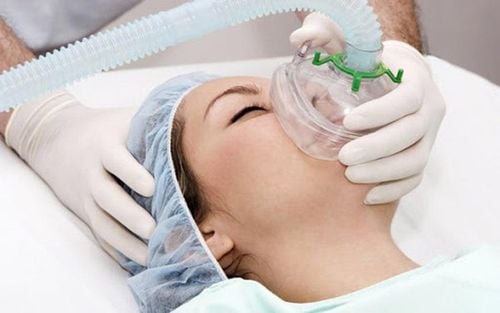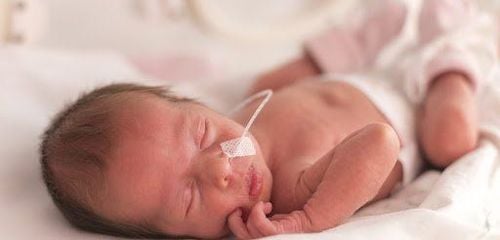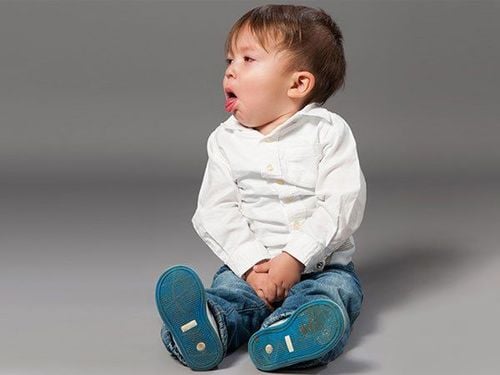This is an automatically translated article.
The article is expertly consulted by Master, Doctor Truong Thanh Tam - Pediatrician - Pediatrics - Neonatology - Vinmec Danang International General Hospital.One of the common complications in infants, especially low birth weight babies, is chronic lung disease. At this point, noninvasive ventilation of the newborn is an optimal choice.
This is a device capable of supporting ventilation but without using an endotracheal tube, minimizing the damage caused by mechanical ventilation and thereby helping the child have a respiratory function that is most suitable for physiology during the day. early life.
1. What is non-invasive ventilation in neonates?
Despite many advances in medical technology, chronic lung disease or bronchopulmonary dysplasia remains the leading cause of death from respiratory failure in neonates, especially those born at 24 weeks. to 26 of pregnancy.Therefore, right after the baby is born, if the signs of respiratory failure are detected in the newborn, it is extremely necessary to prescribe rapid positive pressure breathing intervention to support the sick infant. Respiratory. At the same time, the use of non-invasive ventilation in neonates, i.e. mechanical ventilation not through an endotracheal tube, will depend on a thorough understanding of the equipment used, assessment, and care. neonates to determine appropriate intervention steps.
2. Types of non-invasive ventilation in neonates
The system of machines and devices for non-invasive ventilation in neonates includes a ventilator that supplies air and controls airway pressure, a breathing tube placed in the nose, and a connection from the machine to the breathing tube. The most important part is the pressure sensor, to maintain the child breathing with a positive pressure with a fixed fixed ventilation that has been calculated as well as can be adjusted according to the progression of the disease.However, the term “non-invasive ventilation of the newborn” indicates a general form of breathing control or support. The control of how this form works will be divided into different ways.
2.1 Continuous positive airway pressure (CPAP) Continuous positive airway pressure (CPAP) means that the airway is controlled at a constant pressure throughout the respiratory cycle. This is an immediate intervention for neonatal respiratory distress indications.
Pressure in CPAP is created by one of two mechanisms, varying the flow rate or providing a constant flow of gas and varying the pressure otherwise.
2.2 High Flow Nasal Catheter Positive pressure breathing in infants can also be induced with a high-flow and nasal cannula. The level of pressure may be contributed by the airways on the nasal cannula or from variations in flow rate.
However, the use of catheter type and size should be suitable for the infant's condition, using a nasal cannula with an outer diameter of only 0.3cm in one if the child has a low birth weight of 1400 g at the time of birth. born. At the same time, the flow rate that creates airway pressure needs to match the baby's chest. The researchers estimated that for infants, a flow of 2 liters per minute produced an average positive pressure of 9 cmH2O. Increasing the flow rate may not make positive pressure breathing meaningful and will damage the infant's airway.
2.3 Cyclical positive pressure breathing In contrast to continuous positive pressure breathing (CPAP), in cyclic positive pressure breathing, the machine only creates pressure when the child inhales, consistent with the natural respiratory cycle . This mode of breathing can be set to deliver a regular (asynchronous) delivery or synchronize with the infant's spontaneous respiratory efforts.
In some centers, the doctor will choose the combination mode because the newborn baby's breathing is not regular but also has spontaneous pauses. Accordingly, the machine will support the child to breathe with positive pressure during inspiration or actively initiate breathing when the child has a pause that lasts longer than the active time pre-set.
3. The benefits of non-invasive ventilation in the neonate
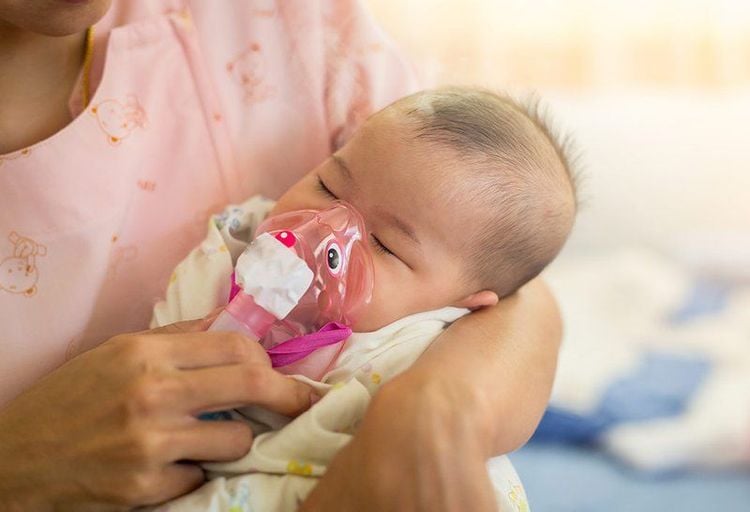
To do so, it is important to note that it is important to choose an appropriate positive pressure level, distinguishing in each case the child needs respiratory intervention due to lung diseases or other causes. This difference is because of the pressure index above the altar line, the lung parenchyma in normal children and children with lung damage due to premature birth, respiratory failure in newborns due to labor, due to congenital diseases birth... is different.
4. How to care for non-invasive ventilation in neonates
Care plays an important part in the effectiveness of non-invasive ventilation in neonates. This is usually done by the nursing staff in the neonatal intensive care unit. The main concern is that the breathing branch of the cannula needs to fit snugly in the infant's nose and mouth needs to be closed. At the same time, the nursing care role in evaluating the effectiveness of noninvasive ventilation in neonates lies in airway management, assessment, and prevention of associated complications.4.1 Evaluating the effectiveness of noninvasive ventilation in neonates Infants receiving noninvasive ventilation interventions should be regularly and carefully evaluated to determine the effectiveness of treatment, ready for weaning and monitor for complications. The parameters that need to be continuously observed on the screen are blood pressure, breathing rate and blood oxygen saturation. Arterial blood gases should also be tested according to the infant's clinical status.
Indications that non-invasive ventilation is effective are reduced work of breathing and improved oxygen saturation both clinically and by blood gas values. On the contrary, a sign of instability is when the child lacks oxygen and needs to increase the level of support on the machine.
4.2 Immobilize the infant If the baby is too active, it increases the risk of deviating the nasal septum, affecting the effectiveness of non-invasive ventilation in the neonate. Therefore, swaddling the infant would be very helpful in minimizing movement and extending the positive-pressure breathing tube.
Accordingly, the appropriate position for an infant is to swaddle the infant with the same neck slightly extended. At the same time, a pacifier can be placed in the mouth to help the baby close the mouth and practice the sucking habit. Some centers may instead use chin straps to keep the mouth closed and the nasal prongs from moving.
4.3 Protecting the airways Irritation or damage to the nasal septum has been reported as a side effect of noninvasive ventilation in the neonate. In particular, the cause of septal injury is often the result of excessive friction, pressure, and humidity caused by artificial ventilation.
However, with good care and the right equipment, these problems are completely preventable. Choosing the right snorkel prongs and helmet is the first step in avoiding nose damage. At the same time, avoid over-wetting as positive pressure breathing itself is likely to increase secretions while limiting their ability to clear these secretions. Therefore, the child should be evaluated at least every 2 to 3 hours and aspirated when necessary.
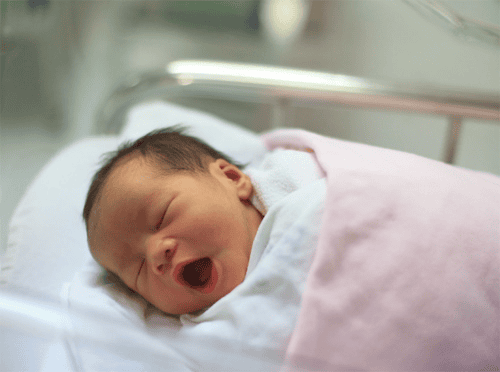
To remedy this, it is important to avoid the possibility of the child swallowing air. At the same time, continuous feeding or direct duodenal feeding may be an appropriate option for neonates with gastric dysfunction caused by positive pressure breathing.
Neonatal noninvasive ventilation has become common, improving live birth rates especially in premature infants with compromised lungs. It is early intervention with positive pressure breathing that reduces the need for intubation and prolonged mechanical ventilation later in life. However, for neonatal noninvasive ventilation to be effective, the infant needs ongoing clinical assessment and comprehensive care to rapidly restore respiratory capacity.
Master. Truong Thanh Tam has 15 years of experience in pediatrics and especially has a lot of experience in hematology, resuscitation and pediatric oncology. The doctor has participated in many national and international scientific conferences on pediatrics and participated in many short-term training courses and was certified as "Pediatric Core Instructor", by Hue University of Medicine and Pharmacy. grant. Currently, she is a Pediatrician at the Department of Pediatrics - Neonatology - Vinmec Danang International General Hospital.
SEE MORE
2 commonly used methods of artificial ventilation Artificial ventilation (ventilator): What you need to know Surfactant pump for neonatal respiratory failure: Things to keep in mind
Please dial HOTLINE for more information or register for an appointment HERE. Download MyVinmec app to make appointments faster and to manage your bookings easily.







